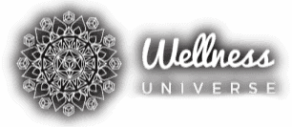In the first two episodes of our Embodied Chair Yoga series we explored connections between embodiment and yoga, how chair yoga supports an embodied fitness regimen suitable for many populations and provided an introductory embodied chair yoga sequence.
Achieving skilled embodiment on this path, however, means overcoming obstacles and including new ideas so that the practice becomes viable, a useful method to begin moving into your best state of healthy fitness.
Chair yoga as a practice is an effective embodiment tool that invites us to slow down, to come back to ourselves, to come into a relationship (into embodiment) with what we might call body-knowing. Regardless of physical ability, chronic pain, or the desired result, embodied chair yoga offers an opportunity to move, or rather be moved, towards any outcome one may have at the top of their list: from relieving physical pain and tension to managing stress to living more fully, with a deeper sense of ease and harmony.
Chair yoga provides many people with a path to whole-person healing that is gentle yet deep — and at the same time, it can be challenging. In this episode, we explore the challenges of doing embodied chair yoga, and how we can move through those challenges when they arise.
A Gateway to Accessibility
Chair yoga combines aspects of traditional yoga systems but adapts them for individuals who struggle with normal postures. It may be an introduction to the practice of yoga for seniors, for those with mobility issues or anyone who’s recovering from injuries. Yet it’s not all roses.
One challenge is access to appropriate resources, even for those who recognize the value of chair yoga. Interest in this form of practice is growing — faculty recently established the Centre for Yoga Studies at the College of Staten Island, New York, conferences on chair yoga are being held around the world, and chair-specific adaptations to well-known postures are being developed — it can still be challenging to identify classes, instructors, or other materials. This scarcity can make people feel unsupported and ill-equipped to start practicing
Physical barriers: while chair yoga might circumvent many of the issues relating to getting into position for yoga poses, there might still be movements or positions we can’t manage for reasons that are specific to our physical frame – and which, consequently, may make us falsely feel as though yoga is not suitable for us.
Preliminary Breathwork to Enhance Your Practice
Breathwork is a cornerstone of embodied chair yoga, helping to enhance the mind-body connection, induce relaxation, and increase mental clarity. It also assists with penetrating the practice, making sure it’s more profound. These classic yogic strategies for breath control (called pranayama), are designed to regulate the breath and, thereby, the subtle, vital energy of the living body. Try the following:
Ujjayi Breathing: Also known as the ‘ocean breath,’ the throat is constricted while you breathe in and out through the nose. This helps balance and calm the body, making it ideal for reducing stress and creating mental focus.
Kapalabhati: This is the more energizing method, characterized by short sharp exhalations where you let the inhale passively follow. Good for clearing the system and can help perk up the body and mind.
Kumbhaka: (Holding the Breath): You can build lung capacity and concentration by holding the breath in after an inhale or out after an exhale. This technique is for more experienced practitioners – beginners should take care.
Alternate Nostril Breathing (Nadi Shodhana): Breathe in through one nostril. Then close that one off with your finger and breathe out through the other, switching sides on the next breath-in. Super-relaxing helps de-stress and can ‘balance’ the two sides of the brain.
Bhastrika (Bellows Breath): Like Kapalabhati with the inhales now active. This is a very revitalizing breath, which warms the system.
Viloma: This is a style of intermittent breath control, which involves stopping the inhalation or the exhale for a moment. One of its goals is to show you how to inhale more fully, and it can be calming.
Sitali: The cooling breath involves curling the tongue into a tube and taking sips of air through the rolled tongue. Then breathing out through the nose. This helps cool the body and calms the mind.
It is possible to integrate these techniques into your chair yoga practice as a means to further anchor the breath with the movement, to help create a more embodied felt sense. Each of these techniques are to be practiced with care, with patience, and best perfected under the guidance of a trained instructor, particularly if new to pranayama.
How to Improve Embodied Chair Yoga with Mindfulness
Embodied chair yoga can combine the physical benefits of embodied yoga with the mental benefits of mindfulness. If you bring mindfulness into your embodied chair yoga practice, your experience can become richer and more robust. Along with focus on your breath, here are some steps to help you practice mindful chair yoga.
Set Your Intention: For each session, start with a specific intention – perhaps a personal one, such as cultivating peace or flexibility, or a broader one, such as spreading kindness.
Stay Focused: Be fully present in each pose. Fully experience the sensations in your muscles, fascia, joints, and any emotions that might come and go with that.
Practice Non-Judgment: Notice your thoughts and feelings but remain non-judgmental. As your mind wanders from your breath and the motions of your body, bring it back kindly. Non-striving: Yield to the rhythm of your inhalations and exhalations. And, similarly, allow your body motions and the overall pattern of your practice to unfold without forcing it.
Extend the mindfulness: The more continuous your mindful awareness is, the greater the effect on your wellness.
A nice way to end your chair yoga session is with some meditation so that you can enjoy the benefits of mindfulness. Here are some meditation options to try.
Breath Awareness Meditation
If you have already practiced ‘breathwork,’ in your session, let that go at the close of your practice, and just notice your natural breath. Otherwise, direct your attention to your natural, unhurried breath. Notice the gentle movements of air as you inhale and exhale through your nostrils. During this session, if you notice that your mind has wandered, kindly escort it back once more to your breath.
Guided Visualization: Find a guided meditation or simply imagine a place that you like. Imagine a beach looking out into the ocean, or a quiet forest with a wooded path — this can help you calm down and relax.
Mantra Meditation: When meditating, focus your mind by repeating a calming word or phrase (called a mantra) in a steady rhythm.
Body Scan: Starting from your toes, scan gently through your body to your head, noticing sensations and tensions as they arise and letting them go.
Loving-Kindness Meditation (Metta): think of loving thoughts towards yourself, and gradually extend these feelings towards others, with whom you start off easiest – those you care for – and whom you get to more difficult until you love all.
Mindful Chair Yoga Sequence: Link mindfulness with a gentle chair yoga practice, noticing what happens with the sensations in your body as you move through different positions.
Sit in stillness: for 2-3 minutes.
Please remember to find a quiet place where you won’t be disturbed and allow yourself 5-10 minutes after your chair yoga class to deepen your sense of relaxation and peace by doing these meditations regularly.
The Inner Connection
Embodied chair yoga is another level up again from chair yoga, and not just because we’re doing it in chairs. There is a full-throated emphasis on knowing your mind, body, and spirit – and a particular way of knowing. Because of that, this method feels different than your average vinyasa class, even for me. With embodied yoga, you’re not just going through the motions of moving, sitting, or standing you’re inhabiting these things. It is a practice in being present and aware.
Obstacles to embodied chair yoga arise from within – principally, the capacity to practice mindfulness and self-acceptance. It takes time to feel good about inhabiting your body by savoring its sensations, allowing you to witness your breathing, thoughts, actions, and emotions.
Additionally, cultural stereotypes and yoga’s mainstream, screen-mediated pictures of the ideal yogi can impede embodied chair yoga practice. Popular media images idealize young, thin, limber practitioners, and this heteronormative, ableist and socioeconomically biased advertising impedes people’s ability to freely experience the joy of yoga by putting them on alert for unrealistic expectations, fear of judgment, and other feelings of inadequacy.
Navigating the Path
To overcome these barriers, an attitude of inclusivity is vital. Being mindful that yoga is a process of learning and realizing what works for each person’s body and mind is an important part of dismantling the belief that there are restrictions.
We need to reach out to both community and support. To talk to other people who struggle with physical issues. To build upon our current community so that there is a way to know that chair yoga is okay and, frankly, recommended. Maybe people shouldn’t feel as shy about letting others know that chairs make them feel better.
In the face of disability, learning to adapt and improvise becomes critical. At its most fluid, chair yoga allows for personal creativity and for poses to be tailored to individual bodies. This kind of adaptation means that, instead of something that holds you back from doing, a chair might come to be seen as a resource for experimentation.
The Benefits of Patience and Compassion
Patience and compassion ground the spirit of embodied chair yoga, another form of mindful exploration. In this practice, the only action is a gentle invitation to observe and experience the body in that moment.
This takes the form of slipping into and out of soft stretches, adapting the suggestions to suit one’s circumstances.
In this way, each stretch helps the body to undo years of locking itself up and calls on one’s patience and compassion to be flexible and ever-eager to explore. The deep breaths can release conformities, norms, or identities that have solidified into complacency.
This is a practice of patiently searching for one’s ‘inner strength’ so that, moment by moment, the rigidity and resistance can be unearthed and welcomed, perhaps drawing attention to hidden fears and desires that the body already holds, before slowly turning the mind’s focus to a new experience on the horizon.
Despite challenges, chair yoga provides space for a more embodied and integrated experience of wholeness through holistic practice. The road may be strewn with boulders, but the boulders become teaching moments to discover how to do the practice, to find one’s yoga. Most importantly, yoga becomes an adventure in developing adaptability, asking for help, and listening to the body.
At the end of the day, chair yoga is not about the poses we can ‘do’ but instead it’s about our journey and what we learn about ourselves as we navigate this practice on our chairs. It can evoke qualities of the human spirit and the potential for transformation that abounds within each of us if we can unlock it.
Embodied chair yoga creates a pathway for self-discovery and healing. It encourages practitioners to slow down, to tune in, and to listen. It is not about what we should or shouldn’t do. It is an invitation into an experience of embodiment itself, and we have the power to embrace or reject that invitation always and at all times. It doesn’t require martial arts attire, running shoes, or even moving off the chair – it can be done right at home or in your office. Embodied chair yoga offers direct access to benefits such as improved physical health, reduced stress, and greater quality of life.
If you’re looking to cultivate and sustain physical fitness, move with greater ease, and relax more effectively right from your chair, then embodied chair yoga may be a practice for you.
Connect with Bonnie on The Wellness Universe.
All information, content, and material are for informational purposes only and are not intended to serve as a substitute for the consultation, diagnosis, and/or medical treatment of a qualified physician or healthcare provider. The information supplied through or on this page, or by any representative or agent of The Wellness Universe, is for informational purposes only and does not constitute medical, legal, or other professional advice. Health-related information provided through this website is not a substitute for medical advice and should not be used to diagnose or treat health problems or to prescribe any medical devices or other remedies. The Wellness Universe reserves the right to remove, edit, move, or close any content item for any reason, including, but not limited to, comments that are in violation of the laws and regulations formed pursuant to the Federal Food, Drug, and Cosmetic Act. None of the posts and articles on The Wellness Universe page may be reprinted without express written permission.
Create Your Heart-Led PR Plan
An empowering and educational course designed to uplevel your message, deliver it with impact, and position yourself for success in the market.
Catch the replay – https://bit.ly/HeartLedPRPlan

see how our self-care books are helping thousands of people around the world. Digital and paperback books are available now.
Connect to the people that help you live your best life: The Wellness Universe

Bonnie Sheldon, an EFT Master Trainer and Somatics expert and guides professionals in achieving stress relief and mindfulness through body-mind integration. Her programs promote self-care, ensuring workplace wellness and success without sacrificing personal well-being or relationships.





